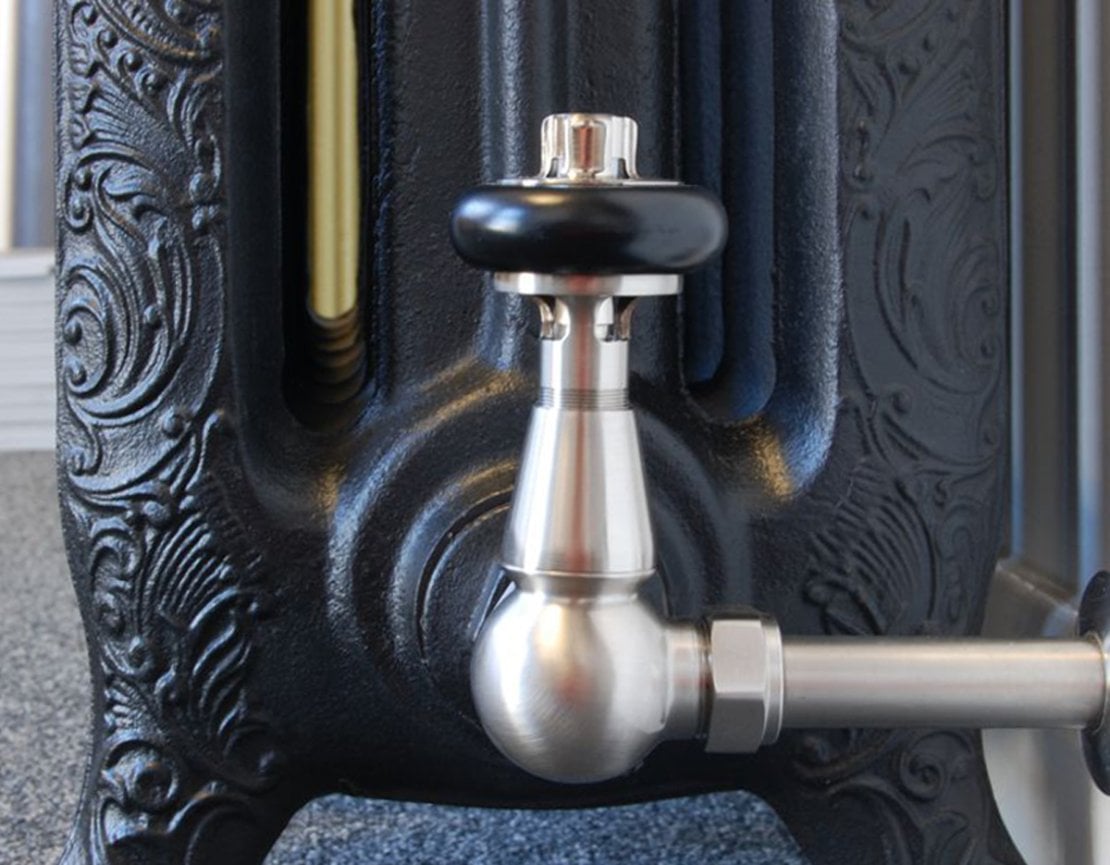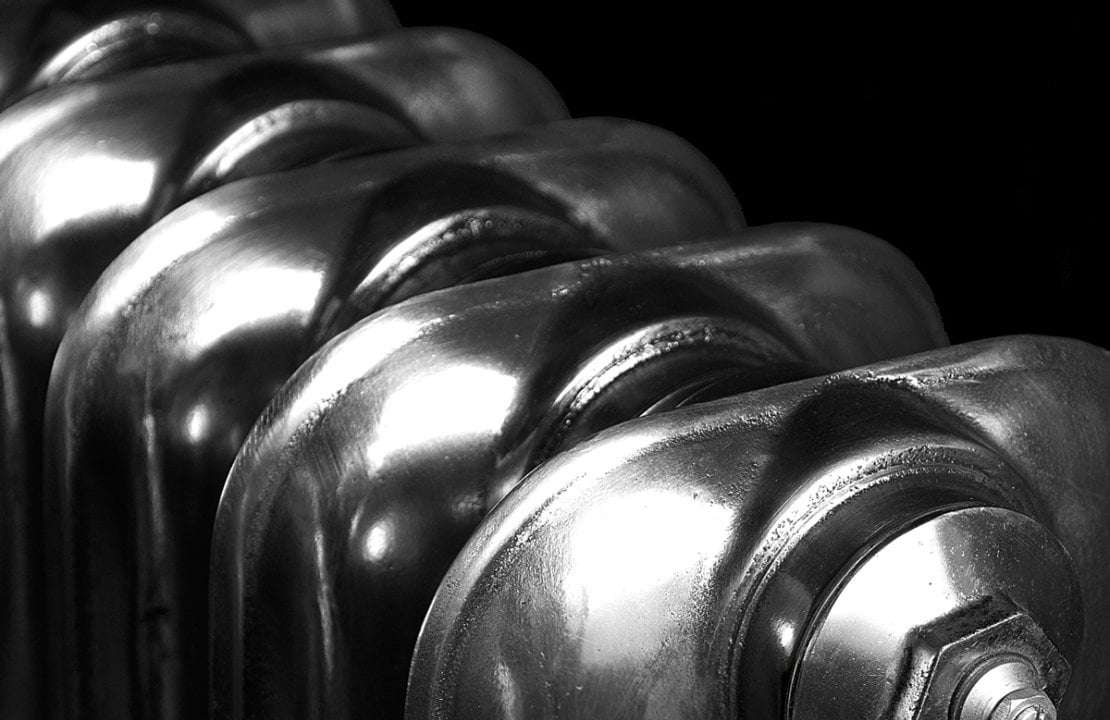Old fashioned radiators that may have been present in your house when you purchased it could be renovated. However, often this is more expensive than purchasing modern reproduction radiators and you are unlikely to achieve your target heat output with them. They are better preserved for simply decorative reasons, unrestored and complemented by traditional reproduction radiators that will provide the heat output you need.
What types of traditional radiators are cheapest?
Traditional radiators fall into two main camps: plain column radiators, that are usually white, such as the four column white steel radiator, but sometimes black or grey. These are usual sold in an array of standard sizes and number of columns. They are off the shelf products that are probably available for immediate dispatch. These simple column radiators are a halfway house between something really authentically Victorian and the modern day waffle radiator. They can be purchased for between £100-300, so are a mid budget solution.
Alternatively, you may wish to purchase the traditional Victorian cast iron radiator. These can usually be purchased in a greater variety of widths and heights, as they are most likely put together on receipt of your order. The manufacturer would have all of the sections manufactured and then depending on the size/number of sections of the radiator you order, would put the period radiator together and then paint it once it is assembled to your order. They can be painted any colour with radiator paint including a variety of metallic colours. The lead time for this could be any where from a week upwards, depending on the finish you order. An antiqued, highlighted or polished finish would take longer as these finishes are done by hand. These authentic-looking Victorian cast iron radiators cost more than the traditional column radiators when compared in terms of size and heat output, as they are made to order and finished to order which has the obvious cost implication.
Both of these types of radiators are heavy and most likely will stand on the floor on cast radiator feet, unlike modern radiators which are much lighter so are most usually wall mounted. You may wish to order wall stays which keep the radiator in position - they are attached to the radiator and then screwed into the wall. Without wall stays, the radiator can move which could compromise the pipe work. As a worst case scenario, your traditional radiator could be knocked over and fall on someone if only the pipes are holding it in place.

Any period radiator that you purchase should be built to modern heat efficiency standards – using them with a thermostatic radiator valve, that can also be purchased in a traditional style, saves energy as once the room reaches a set temperature, the thermostat turns the radiator off. Thermostatic valves save you money in the long term but will cost you more to purchase. Traditional radiator valves are beautiful and will enhance the aesthetics of your room along with your radiator. If your budget is restricted, purchase the traditional radiator valves for the public areas of your house and use cheaper valves for the bedrooms.
To determine the right heat output of the Victorian style radiator for your room, you need to use a Heat Output calculator. If your room is tall with 3 exterior walls, it will need more heat output to reach a particular temperature than a smaller room with one external wall. There are a wealth of beautiful traditional radiator designs available and you will most likely be able to find one that will suit both your taste and your pocket.
For any further assistance with any aspect of choosing a traditional radiator or traditional radiator valves, please contact The Victorian Emporium and we will be pleased to help you.


Be the first to add a comment...